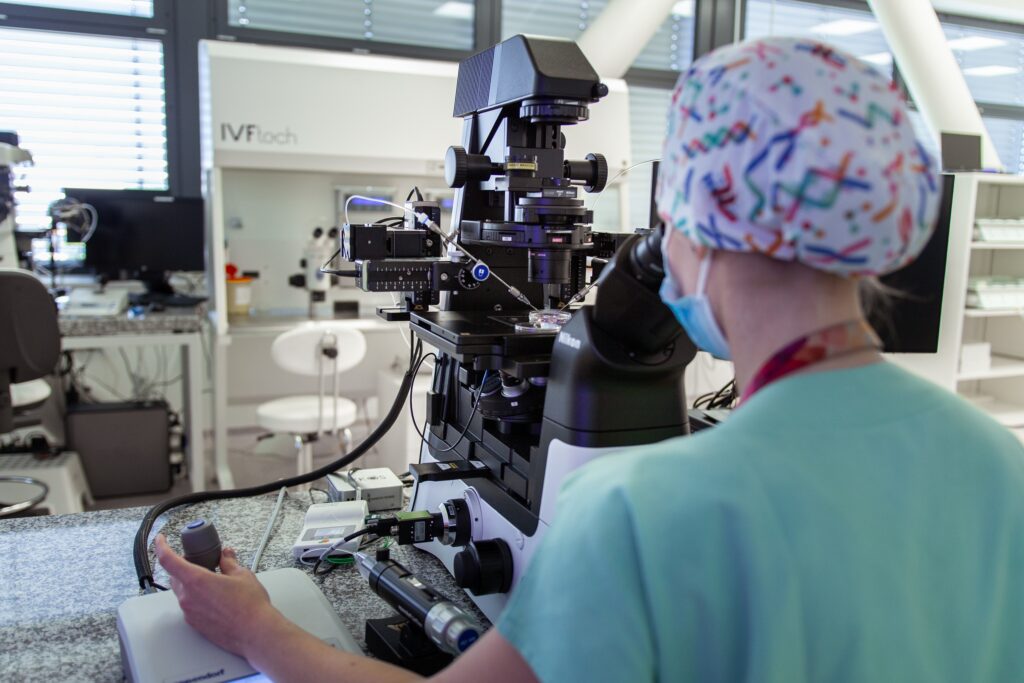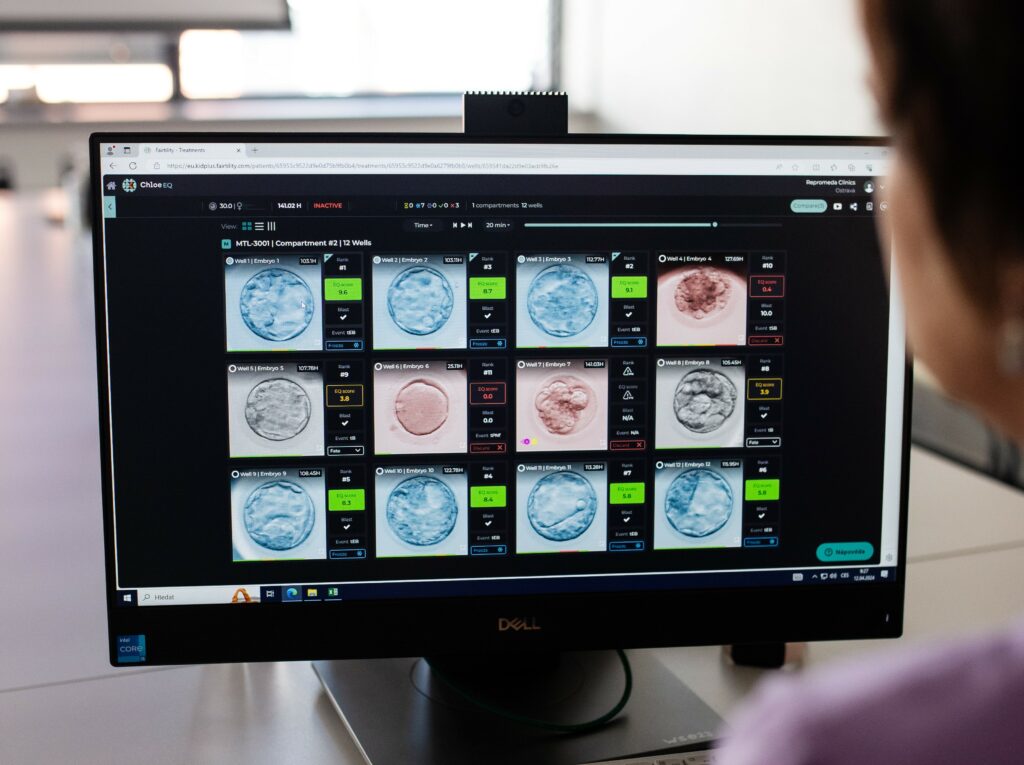It´s not only natural conception that does not have to happen the first time. Unfortunately, the methods of assisted reproduction are also not 100%. Repeated attempts at clinics of assisted reproduction can be demotivating and exhausting. That is the reason why we in Repromeda strive to introduce the latest methods, that increase the chance of a successful IVF cycle. One of the innovations is also MOON.
The abbreviation MOON stands for Mature Oocytes Only. This advanced microscopic method explores the maturity of oocytes through polarized light. The aim of this technique is to determine the correct timing of fertilization to increase the chances of the embryo nesting and subsequent conception.
Have you had a puncture with five or less oocytes being removed or have you been told by your doctor, that you are in a higher reproductive age? If so, then the MOON method is suitable just for you. It is recommended to women, who have lower number of mature oocytes or to women, whose maturing of oocytes takes place slower.
The use of polarized light enables embryologists to see under a microscope the mitotic spindle in oocytes. It cannot be seen under a common light microscope, but is very important. The mitotic spindle is a organelle responsible for dividing of cells and determines when an oocyte is able to receive a sperm and start the formation and development of an embryo. The aim of the MOON method is to determine the most suitable moment for micromanipulative fertilization of oocytes with sperms (ICSI). In fact it is a moment, when there is the highest probability of a successful formation of an embryo.

Immature oocyte under a light microscope and under a polarized light

Mature oocyte under a light microscope and under a polarized light



